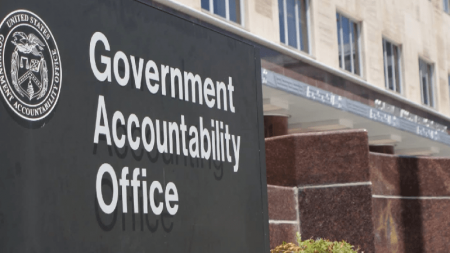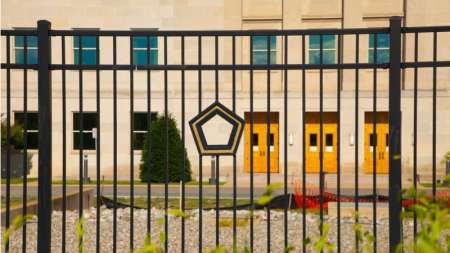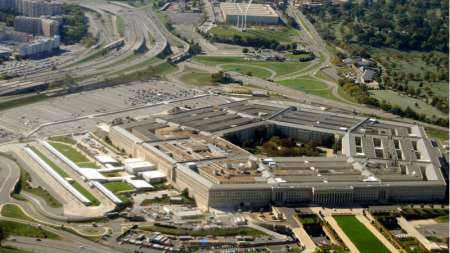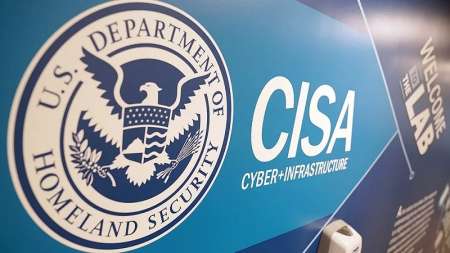Good communication plays an outsized role in how highly federated government agencies – those with numerous component parts – will be able to implement different approaches to zero trust security rather than pursue one-size-fits-all policies, Federal government officials said today at ATARC’s Zero Trust Summit event in Washington. […]
Nearly two years after the White House released its cybersecurity executive order (EO) that homed in on zero trust, Federal agencies are well on their way to completing their zero trust maturity journeys and are using the president’s guidance as an opportunity to modernize their systems. […]
The Cybersecurity and Infrastructure Security Agency (CISA) is considering turning its current Trusted Internet Connections (TIC) program office into an office that supports Federal agencies as they pursue requirements from CISA and the Office of Management and Budget (OMB) to migrate to zero trust security architectures. […]
The General Services Administration (GSA) was an early adopter of zero trust security architecture, and Chief Information Officer (CIO) David Shive said this week that the next step for the agency is to focus on application-level security. […]
The challenge of implementing zero trust is explaining the benefits to the end users, Federal and industry cybersecurity experts said today at the Zscaler Public Sector Summit in Washington, D.C. […]
If you’ve been wondering how much the Federal government is investing in its sweeping effort to migrate to zero trust security architectures, the answer to that question may be coming this week. […]
The Department of Justice (DoJ) chief information officer (CIO) said today that the agency’s component offices have provided “overwhelming” feedback to ZScaler’s zero trust network access (ZTNA). […]
Thomas Santucci, director of the Data Center & Cloud Optimization Initiative program management office at the General Services Administration (GSA), is pointing Federal agencies to sources of expertise including CIO Council guidance and FedRAMP (Federal Risk and Authorization Management Program) as they navigate through requirements for the migration to zero trust security architectures. […]
By Melissa Trace, Vice President, Global Government Solutions at Forescout Technologies Research from Forescout’s Vedere Labs reveals that government organizations have the highest percentage of devices with risk. Between the explosion of remote work, the ongoing ransomware epidemic and the fact that the number of non-traditional assets – such as IoT, OT and IoMT – […]
The Department of Defense (DoD) released an updated version of its Cybersecurity Reference Architecture (CSRA) – the fifth iteration of this document – laying out new objectives closely aligned to the broader DoD zero trust strategy. […]
The Department of Education (DOE) is close to completing the first phase of its three-part plan to migrate to zero trust security architectures, an agency official said this week. […]
The Defense Information Systems Agency (DISA) has officially completed work to prototype its Thunderdome zero trust security project, and has rolled out the system to about 1,600 users so far, with more on the way, a senior DISA official said today. […]
When the coronavirus pandemic emerged, the U.S. Air Force Research Laboratory (AFRL) was well-postured to take on the challenge of hybrid work. But the agency still has more work to do to meet that continued operational challenge, according to an agency official. […]
Successfully implementing a zero trust architecture can oftentimes be a challenge for organizations, especially when there is a lack of buy-in at the executive level. To help clear that kind of hurdle, Federal officials say the secret sauce is developing a zero trust business case. […]
As the Federal government continues to execute on fundamental shifts in network security strategies like the move to zero trust architectures, agency tech leaders are emphasizing the need to push back against the status quo of established technology thinking. […]
Federal health-sector cybersecurity leaders from components across the Department of Health and Human Services (HHS) said that when it comes to implementing zero trust security mandates – such as Office of Management and Budget (OMB) memo M-22-09 – agencies can’t treat the task as just “checking another box.” […]
From ensuring the nation’s voting infrastructure was secure in preparation for election season to developing strategies and goals to support critical infrastructure owners and operators, boosting the nation’s cyber posture was among many Federal agencies’ top priorities for 2022. […]
From announcing a multi-cloud effort to provide enterprise cloud capabilities for the Department of Defense (DoD) at all three security classifications, to implementing ambitious cyber-related goals to improve its security posture, it’s clear the DoD has certainly had a very busy year on the year on the tech front. […]
“You can’t secure what you can’t see” is a common refrain in cybersecurity circles. It’s echoed in multiple Federal IT mandates, including the zero trust strategy and the event logging memo from the Office of Management and Budget. Gaining comprehensive visibility across agency networks, devices, applications, and identities is no mean feat in today’s diverse and ever-changing IT environments. […]
A new report from cloud security provider Zscaler titled The State of Zero Trust Transformation 2023 report finds that more than 90 percent of IT leaders surveyed are implementing zero trust architecture I connection with their cloud migration strategy over the next 12 months. […]
Federal agencies have until September 30, 2023, to report at least 80 percent of their IT systems through the Cybersecurity and Infrastructure Security Agency’s (CISA) Continuous Diagnostics and Mitigation (CDM) program, according to an OMB Federal Information Security Modernization Act (FISMA) guidance issued on Dec. 2. […]
By Petko Stoyanov, Global Chief Technology Officer, Forcepoint Many Federal agencies are considering investing in zero trust network access (ZTNA) solutions. But not all ZTNA applications are equal, and it’s important agencies invest in ZTNA solutions that will allow them to align and meet the “Optimal” stage outlined in the Cybersecurity and Infrastructure Security Agency’s […]
A senior Defense Department (DoD) technology official this week explained how a robust cloud environment is an essential element to ensuring the successful implementation of the Pentagon’s software modernization strategy. […]
The Department of Defense (DoD) today released its long-anticipated zero trust strategy and roadmap outlining how the agency plans to fully implement a department-wide zero trust cybersecurity framework by fiscal year (FY) 2027. “What is significant about the strategy is that the strategy makes zero trust tangible and achievable while recognizing a dynamic and frankly, […]
Federal cybersecurity experts explained at a Nov. 8 ATARC event that the road to zero trust security is a long and often bumpy journey that their agencies at still learning to navigate, despite some being in the game for several years now. […]
The Defense Information Systems Agency (DISA) is well prepared to meet the Department of Defense’s (DoD) 2027 zero trust architecture goal, officials said on Nov. 7 at a DISA press conference. […]
The Defense Information Systems Agency (DISA) is on track to complete work on its Thunderdome Prototype zero trust security project by January 2023, an agency official confirmed on Nov. 7 at a DISA press conference. […]
Federal agency leaders agree that zero trust security is the “bread and butter” of their agencies’ cybersecurity operations in order to best secure personal health information, where the stakes are high given the special sensitivity of that data. […]
Chris Cleary, the U.S. Navy’s principal cyber advisor, said that data is the fuel driving the implementation of zero trust security architectures, and said agencies moving in that direction need to meet the challenge of identifying data and protecting it. […]
Federal agencies are engaged in “a tremendous amount of work” to meet requirements to move to zero trust security architecture as laid out in President Biden’s cybersecurity executive order issued last year, even as some agencies are struggling with initial steps to begin that transition, a top Cybersecurity and Infrastructure Security Agency (CISA) official said Wednesday. […]
























